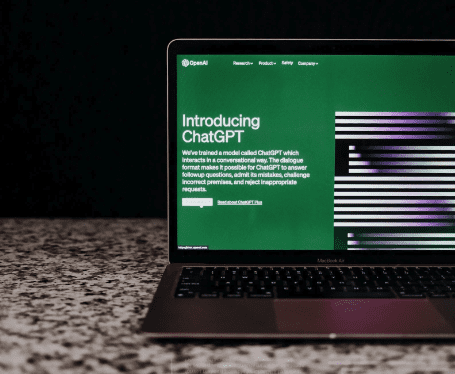
If you are interested in chatbots, you may have heard of ChatGPT, an AI chatbot application that uses GPT-3 and GPT-4’s language models that people can interact with. GPT stands for Generative Pre-trained Transformer, a deep learning technology that uses artificial neural networks to write like a human. ChatGPT is one of the most popular and advanced chatbots available today, but what makes it so special? And what are the differences between ChatGPT-3 and ChatGPT-4?
ChatGPT-3 was released in 2020 by OpenAI, a research organization dedicated to creating and ensuring the safe use of artificial intelligence. ChatGPT-3 had 175 billion parameters, which are numerical values that determine how the neural network processes data. The more parameters a model has, the more complex and diverse texts it can generate. ChatGPT-3 was able to produce coherent and fluent texts on various topics, such as news articles, stories, jokes, poems, etc. It could also answer questions and have conversations with humans on different domains.
However, ChatGPT-3 also had some limitations. For example, it sometimes struggled with factual accuracy, logical consistency, ethical issues, and common sense reasoning. It also tended to repeat itself or generate irrelevant or nonsensical texts when given vague or ambiguous inputs. Moreover, ChatGPT-3 was not widely accessible to the public due to its high cost and potential misuse.
That’s why OpenAI decided to create a new version of its language model: GPT-4. GPT-4 was unveiled in March 2023 as the successor of GPT-3.5 (an intermediate version that had 350 billion parameters). GPT-4 has an astonishing 1 trillion parameters (or even more), making it one of the largest and most powerful AI systems ever created. GPT-4 is also more fine-tuned than its predecessors for specific tasks and domains.
One of these tasks is chatbotting. ChatGPT-4 is the fined tuned version of ChatGPT-3 for conversational AI. It leverages GPT-4’s massive data and computational resources to generate more natural, engaging, informative, and diverse responses than ChatGPT-3. According to OpenAI’s internal evaluations, ChatGPT-4 is 40% more likely to produce factual responses than GPT-3.5. It can also handle longer and more complex inputs and outputs without losing coherence or quality. Making it a potential big win for certain industries.
Some of the advantages of ChatGPT-4 over ChatGPT-3 are:
- It can provide more accurate information on various topics by using reliable sources from the web.
- It can handle multiple languages and dialects with ease.
- It can adapt its tone and style according to the context and user preferences.
- It can generate creative content such as poems, stories, jokes, images, etc. on demand.
- It can learn from user feedback and improve over time.
Of course, ChatGPT-4 is not perfect either. It still has some challenges and risks that need to be addressed by OpenAI and its users. For example:
- It may still produce errors or biases that could harm users or others.
- It may still be misused for malicious purposes such as spamming, scamming, or manipulating people.
- It may still raise ethical and social questions about human-AI interaction and responsibility.
The good news is OpenAI has implemented some safeguards and restrictions on how ChatGPT-4 can be used and accessed. For instance:
- It requires users to agree to a code of conduct and follow certain guidelines when using ChatGPT-4.
- It monitors user behavior and flags any suspicious or abusive activities.
- It limits access to certain features or domains based on user credentials or subscriptions.
Round up
ChatGPT-4 is a remarkable advancement in conversational AI that offers many benefits over ChatGPT-3. However, it also comes with some challenges and risks that need to be carefully considered and managed by OpenAI and its users. I would encourage users of these tools to pay close attention to the generated outputs and keep an eye out for any potential hiccups.
If you’re interested in this topic and would like to know more about the future of AI, check out our recent podcast with Vincent Sider below:



